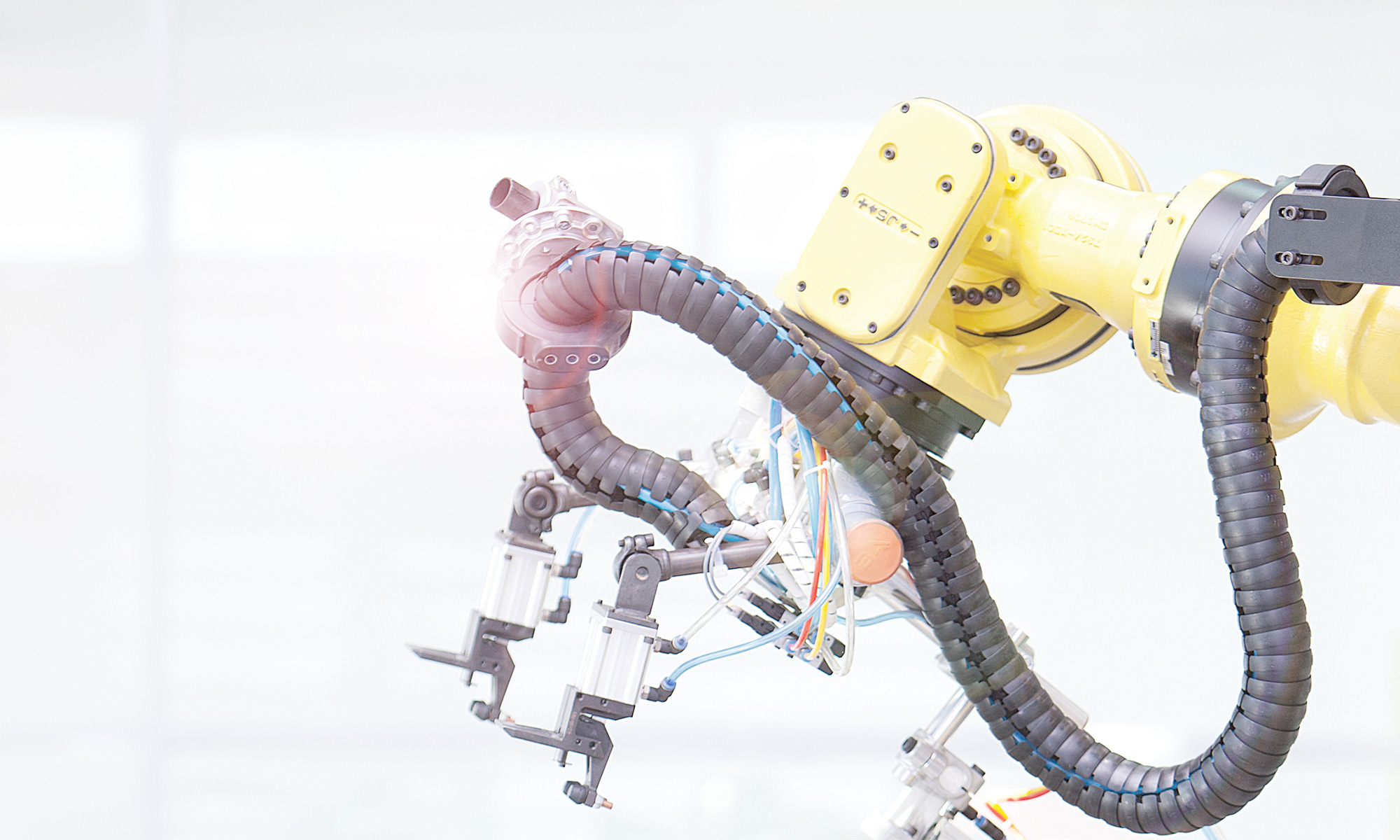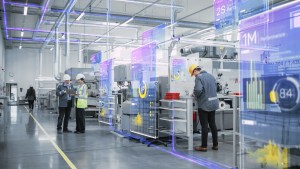
In 2023, the industrial automation sector experienced significant advancements and transformative trends, shaping the landscape of manufacturing and production processes. Listed below are our top 10 blogs highlighting some of these advancements, from streamlined changeover processes using RFID to machine safety levels determined through risk assessments and a proactive approach to unplanned downtime using condition monitoring. Other blogs explored UHF RFID considerations, communication protocol analysis, camera selection guidance for engineers, machine safety practices emphasis, and discussions on IO-Link and MQTT benefits for automation projects.
-
- Using RFID Technology for Rapid Changeover
 In today’s tight economy, marked by high inflation and supply chain issues, the need to enhance product flexibility has become increasingly important. Most manufacturing lines these days are set up to run multiple work orders of the same product type based on specific requirements. The goods produced at the manufacturer line are still the same, but the package size can change. The raw materials that start the process might be the same, but other component parts and tools on the machine that help with the different packaging sizes must be replaced. The process of converting one product line or machine to another is known as changeover. This blog explores how Radio Frequency Identification (RFID) technology can revolutionize changeover by eliminating manual verification and adjustments.
In today’s tight economy, marked by high inflation and supply chain issues, the need to enhance product flexibility has become increasingly important. Most manufacturing lines these days are set up to run multiple work orders of the same product type based on specific requirements. The goods produced at the manufacturer line are still the same, but the package size can change. The raw materials that start the process might be the same, but other component parts and tools on the machine that help with the different packaging sizes must be replaced. The process of converting one product line or machine to another is known as changeover. This blog explores how Radio Frequency Identification (RFID) technology can revolutionize changeover by eliminating manual verification and adjustments.
Read more.
-
- Understanding Machine Safety: The Power of Risk Assessments
 My last blog post was about machine safety with a focus on the different categories and performance levels of machine safety circuits. But I just briefly touched on how to determine these levels. By default, we could design all equipment with the highest-level category and performance levels of safety with an abundance of caution, but this approach could be extremely expensive and not the most efficient.
My last blog post was about machine safety with a focus on the different categories and performance levels of machine safety circuits. But I just briefly touched on how to determine these levels. By default, we could design all equipment with the highest-level category and performance levels of safety with an abundance of caution, but this approach could be extremely expensive and not the most efficient.
Read more.
-
- Getting Started With Condition Monitoring
 Unplanned downtime is consistently identified as one of the top manufacturing issues. Condition monitoring can offer a fairly simple way to start addressing this issue and helps users become more proactive in addressing and preventing impending failures of critical equipment by using data to anticipate problems.
Unplanned downtime is consistently identified as one of the top manufacturing issues. Condition monitoring can offer a fairly simple way to start addressing this issue and helps users become more proactive in addressing and preventing impending failures of critical equipment by using data to anticipate problems.
Read more.
-
- Sensing Ferrous and Non-Ferrous Metals: Enhancing Material Differentiation
 Detecting metallic (ferrous) objects is a common application in many industries, including manufacturing, automotive, and aerospace. Inductive sensors are a popular choice for detecting metallic objects because they are reliable, durable, and cost-effective. Detecting a metallic object, however, is not always as simple as it seems, especially if you need to differentiate between two metallic objects. In such cases, it is crucial to understand the properties of the metals you are trying to detect, including whether they are ferrous or non-ferrous.
Detecting metallic (ferrous) objects is a common application in many industries, including manufacturing, automotive, and aerospace. Inductive sensors are a popular choice for detecting metallic objects because they are reliable, durable, and cost-effective. Detecting a metallic object, however, is not always as simple as it seems, especially if you need to differentiate between two metallic objects. In such cases, it is crucial to understand the properties of the metals you are trying to detect, including whether they are ferrous or non-ferrous.
Read more.
-
- Considerations When Picking UHF RFID
 If you’ve attempted to implement an ultra-high frequency (UHF) RFID system into your facility, you might have run into some headaches in the process of getting things to work properly. If you are looking to implement UHF RFID, but haven’t had the chance to set things up yet, then this blog might be beneficial to keep in mind during the process.
If you’ve attempted to implement an ultra-high frequency (UHF) RFID system into your facility, you might have run into some headaches in the process of getting things to work properly. If you are looking to implement UHF RFID, but haven’t had the chance to set things up yet, then this blog might be beneficial to keep in mind during the process.
Read more.
-
- Comparing IO-Link and Modbus Protocols in Industrial Automation
 In the realm of industrial automation, the seamless exchange of data between sensors, actuators, and control systems is critical for optimizing performance, increasing efficiency, and enabling advanced functionalities. Two widely used communication protocols, IO-Link and Modbus, have emerged to facilitate this data exchange. In this blog, I’ll analyze the characteristics, strengths, and weaknesses of both protocols to help you choose the right communication standard for your industrial application.
In the realm of industrial automation, the seamless exchange of data between sensors, actuators, and control systems is critical for optimizing performance, increasing efficiency, and enabling advanced functionalities. Two widely used communication protocols, IO-Link and Modbus, have emerged to facilitate this data exchange. In this blog, I’ll analyze the characteristics, strengths, and weaknesses of both protocols to help you choose the right communication standard for your industrial application.
Read more.
-
- Exploring Industrial Cameras: A Guide for Engineers in Life Sciences, Semiconductors, and Automotive Fields
 In the bustling landscape of industrial camera offerings, discerning the parameters that genuinely define a camera’s worth can be a daunting task. This article serves as a compass, steering you through six fundamental properties that should illuminate your path when selecting an industrial camera. While the first three aspects play a pivotal role in aligning with your camera needs, the latter three hold significance if your requirements lean towards unique settings, external conditions, or challenging light environments.
In the bustling landscape of industrial camera offerings, discerning the parameters that genuinely define a camera’s worth can be a daunting task. This article serves as a compass, steering you through six fundamental properties that should illuminate your path when selecting an industrial camera. While the first three aspects play a pivotal role in aligning with your camera needs, the latter three hold significance if your requirements lean towards unique settings, external conditions, or challenging light environments.
Read more.
-
- Focusing on Machine Safety
 Machine safety refers to the measures taken to ensure the safety of operators, workers, and other individuals who may encounter or work in the vicinity of machinery. Safety categories and performance levels are two important concepts to evaluate and design safety systems for machines. A risk assessment is a process to identify, evaluate, and prioritize potential hazards and risks associated with a particular activity, process, or system. The goal of a risk assessment is to identify potential hazards and risks and to take steps to prevent or mitigate those risks. The hierarchy of controls can determine the best way to mitigate or eliminate risk. We can use this hierarchy, including elimination, substitution, engineering, and administrative controls, and personal protective equipment (PPE), to properly mitigate risk. Our focus here is on engineering controls and how they relate to categories and performance levels.
Machine safety refers to the measures taken to ensure the safety of operators, workers, and other individuals who may encounter or work in the vicinity of machinery. Safety categories and performance levels are two important concepts to evaluate and design safety systems for machines. A risk assessment is a process to identify, evaluate, and prioritize potential hazards and risks associated with a particular activity, process, or system. The goal of a risk assessment is to identify potential hazards and risks and to take steps to prevent or mitigate those risks. The hierarchy of controls can determine the best way to mitigate or eliminate risk. We can use this hierarchy, including elimination, substitution, engineering, and administrative controls, and personal protective equipment (PPE), to properly mitigate risk. Our focus here is on engineering controls and how they relate to categories and performance levels.
Read more.
-
- Why Choose an IO-Link Ecosystem for Your Next Automation Project?
 By now we’ve all heard of IO-Link, the device-level communication protocol that seems magical. Often referred to as the “USB of industrial automation,” IO-Link is a universal, open, and bi-directional communication technology that enables plug-and-play device replacement, dynamic device configuration, centralized device management, remote parameter setting, device level diagnostics, and uses existing sensor cabling as part of the IEC standard accepted worldwide.
By now we’ve all heard of IO-Link, the device-level communication protocol that seems magical. Often referred to as the “USB of industrial automation,” IO-Link is a universal, open, and bi-directional communication technology that enables plug-and-play device replacement, dynamic device configuration, centralized device management, remote parameter setting, device level diagnostics, and uses existing sensor cabling as part of the IEC standard accepted worldwide.
Read more.
-
- Using MQTT Protocol for Smarter Automation
 In my previous blog post, “Edge Gateways to Support Real-Time Condition Monitoring Data,” I talked about the importance of using an edge gateway to gather the IoT data from sensors in parallel with a PLC. This was because of the large data load and the need to avoid interfering with the existing machine communications. In this post, I want to delve deeper into the topic and explain the process of implementing an edge gateway.
In my previous blog post, “Edge Gateways to Support Real-Time Condition Monitoring Data,” I talked about the importance of using an edge gateway to gather the IoT data from sensors in parallel with a PLC. This was because of the large data load and the need to avoid interfering with the existing machine communications. In this post, I want to delve deeper into the topic and explain the process of implementing an edge gateway.
Read more.
We appreciate your dedication to Automation Insights in 2023 and look forward to growth and innovation in 2024.
Like this:
Like Loading...



























